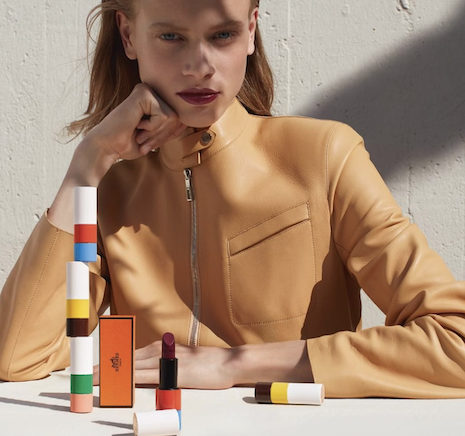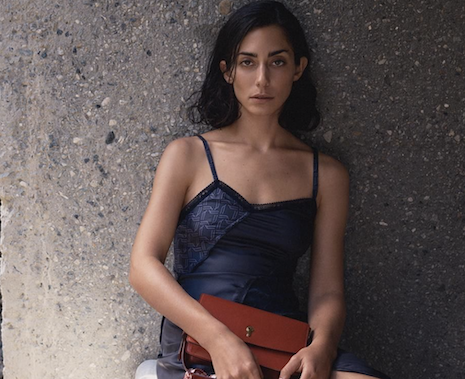Gucci is the most transparent luxury brand ranked by a respected index. But luxury labels lag behind high street chains when it comes to pulling back the curtain on their supply chain and fair trade procedures.
The Kering-owned Italian fashion brand checked 48 percent of the transparency boxes this year, up from 40 percent in 2019, according to Fashion Revolution’s annual Fashion Transparency Index. Additionally, Gucci was the only brand to score 100 percent in the section on Policy and Commitments.
“Transparency enables consumers, investors, lawmakers, journalists, NGOs and trade unions to hold brands and retailers to account for their impacts on people working in their supply chains and the environment,” said Sarah Ditty, global policy director at Fashion Revolution, Staffordshire, U.K.
“When consumers are equipped with information about the social and environmental impacts of the clothes they buy, they are able to make better informed decisions,” she said. “As a result, transparency builds trust in the brands they buy and a lack of transparency can damage brands’ reputation.
“Gucci is the luxury brand that shares the most information publicly about how they tackle important social and environmental issues in the supply chain, and we would encourage more luxury brands to follow their lead.”
 Ermenegildo Zegna's luxury leisurewear men's collection. Image credit: Ermenegildo Zegna
Ermenegildo Zegna's luxury leisurewear men's collection. Image credit: Ermenegildo Zegna
Fashion Transparency Index
Affluent consumers are interested in transparency.
According to a 2018 Elle magazine survey of readers in the United Kingdom, 62 percent said they are more likely to buy an item of clothing from a brand that values sustainability.
Inspired by this demand, Fashion Revolution has been tracking the performance of fashion brands against five key areas: policy and commitments, governance, traceability, supplier assessment and remediation, and spotlight issues.
This year’s index looks at 250 brands and examines 220 indicators from a large range of social and environmental topics including animal welfare, biodiversity, chemicals, climate, due diligence, forced labor, freedom of association, gender equality, living wages, purchasing practices, supplier disclosure, waste and recycling, and working conditions.
High street brands are leaders in the fashion transparency movement, according to Fashion Revolution’s annual Fashion Transparency Index 2020.
The average score across the 250 brands studied this year was 23 percent, up 2 percent over last year.
This is the first year that a brand has scored more than 70 percent on the index.
H&M ranked No. 1 on the list with 73 percent of 220 possible transparency measures, because the retail giant publishes detailed information about its supply chain and its approach to a range of social and environmental issues.
C&A earned 70 percent, Adidas and Reebok both earned 69 percent and Esprit earned 64 percent.
Brands that have participated in this survey over the last few years saw a 12-percentage point increase in their average scores.
Ermenegildo Zegna’s score increased by 22 percentage points this year, becoming the first luxury brand to publish a detailed list of its suppliers.
Forty percent of brands are publishing a list of their first-tier manufacturers, up from 35 percent in 2019.
This year 24 percent of brands published some of their processing facilities, up from 19 percent last year.
Only 7 percent publish their raw material suppliers, up from 5 percent year-over-year.
 Hermès' cosmetics collection. Image credit: Hermes
Hermès' cosmetics collection. Image credit: Hermes
Hermès has disclosed the production sites it operates for many years. Gucci owner Kering is also starting to disclose a small number of its raw materials suppliers.
“Luxury brands tend to be working very closely with their suppliers and the people working in their supply chains, with a focus on quality and craftsmanship,” Ms. Ditty said.
“However, many luxury brands don’t share any information about these suppliers and the good practices happening behind-the-scenes,” she said. “This is a shame because it leaves consumers in the dark and wondering what brands have to hide.
“We would encourage more luxury brands to open up to the public and share with everyone what they are doing to address social, human rights and environmental issues, especially as more and more consumers are becoming conscious of these topics.

Bally's #relaxinstyle #stayhome social media campaign. Image credit: Bally
Luxury lag
The lowest scoring brands on the index earned a 0 percent. These include Swiss luxury fashion house Bally, Italian brand Max Mara, Pepe Jeans, Tom Ford, Elie Tahari, Jessica Simpson, Dutch high street brand Mexx and Chinese retailers Belle, Heilan Home and Youngor.
“Brands like Bally or Tom Ford that are scoring 0 percent on transparency could take some simple steps to start communicating on their Web sites about what the company is doing to address important social and environmental issues,” Ms. Ditty said.
“It is likely that these brands are doing some good things but not talking about it publicly, which means consumers are unable to join them on their sustainability journey,” she said.
“These brands could start by sharing information about their policies or initiatives that focus on key social and environmental challenges.”
{"ct":"1qLMHEDxR3G6Kid3gzptA9FMzmYaRXIQuWVZ\/oYQGmDHuu6WZNxImq2T5r44r+YMYBE1RPdbeEtF4S90ik9RaX8AGdOSPaHBtekY6xxE7pOcxXD2A+EMzqu1umVpDZNvt\/CpNBhWwWpEa5P\/4YTf1Uzt0tkBu9\/5UPJRHIyhx\/RamacBE9UAr8J+HbXMTvgyyyeG\/LEXHyiMVLEHF7EP3A2C+y4an5PNtm99GU63pFBPSP\/GnREiLr6UnUrjsnMw64nY3qBt5rCctenOGzMcXLJJJcT4u4m5V06FsObHsMnwKJaYvFiEmdr3bLXHAOVMEaz1WtZ4u8SYgjOMkV\/1fE7\/oamp9bcwbJRJtv+NUZ\/XHpXkvxn\/0DKiSiUuaOq3DIrGdaWGCBCqbURjXgDhr0nSSUOV7a4GxD3J9UW0e9cd+fkLbwDqXKaGrBTm4bzmqsGt+SnghLgbO5A+xFEg7f2QT1t\/K\/fKMdF6KTFHd0b5v0jnfD3coeZVW9v92jpl+SHkVqF3Bo35MqQmJDSGi4vNHXzo1cm6mgxCL6mZ+lQ2SiRv+fWUNtCfoIJR\/p\/TIk54uKW2NMbVeI4WIaJ6hSONHTDm7KO4fNgrhvXNvhfkgCOAq7aiQ1r2ATMhX0OvwnVtvuxiJQdpGVkA0TqpucE5BR\/PdxVpRDszwuWu23L1ZT9eP+h5OjoiI8drR90jC2\/oTgEKQD1vazPVrZVrC2qjiCmslTctLHe8MQCE810pwuYatB3ldUjK\/mfDtZWC3N533oawKcIicncqefNENcF4ddzWeKVBSLbdLppzI88MF4l+dhnti10T5GBRH0o\/GhsAFKPugd8yMyZSzrHxK7YIU42\/UvgliCkxdkTnCQVgfP19YAkzOU+rJjtNoTG1OfGM2c9otJ490VYjgWOArr4Qlu1aZEPzPrhhPXHIzTHB8AN7lJqnoK3FESDY\/ZPcWkew1PUE3cXv8AxxTcrulPytcjnGqRsFvXB8yLSQs8mjr2GLuYo2BtZCwuF7lNaCaEvx\/84IaMvUuQeyRlXfP0aXoFk68HCpsvZZdGNZESLmKx6ky\/1cYmqQ\/DBuo5e\/vFUhxsljlB96sYyXIYpPuxgY0SQHebMQRtgft5Zw\/oH5q2yBjFZL6n57RcCpNGJ89N9umDTgR+W5payklnMQEQWyaF\/7WFdE4zDT\/F0xKYRAO+I40Y+iraC5OiGe5MmmrmT1F4pDLYXKsy6MgGCjCA8pG4Df6UaJ+PLEUki6tX2niynZSWmKA\/ONqwPAqbYwgh4K7fUaxjFkHU0TyEEBT4Rs4xE\/cCUbaKQXyRmnG75\/980p300QC5Yp9zQ0YYnkkWQJ8iM42rdbCExT3z1gH5lpbsGfo+0k8RH5NWt9qZaO1Y9HbKQdv1P9EfrBLQoMM\/dWNxE9KJdi3nfDVLjY24mA9Q2TXDkWsIQjvDP+3PjI62UKYThjb9t0fldYQQLa6iDFWsHrK5RNpWyawhgiu9qvGUeaeK5sWkQRQlsk2uubuXAFKtlawVF\/KqW3VSVXzP89vCk9CzSbX4G97ZP3wZmh+kBNa9hzAde4XA3DVsipW\/9P4SpHzSig6fDt2tTKK3kH4+Y2x5nfoIuyE8lKzu6MsoIF+1J8pKOTqbE+vb\/Hx30V4QRGwJtoRk2fvH5odit6AQEIX4TbH332RXxhepthuwR4CBhOmsAjPC2gPy9vEY5gRculvLs+3I\/QNnyRjoOXR495lPo+8FZRHJgKLwVkjTeYL7\/S3PDzWQlFg9euttQnElNrpurS73+e8gASgjHaFlABad0FZWblqmW9yJZ158mK1yxlu9Ly6OPziwal+pSR432Th5bIwx6D+V3H16HDLz\/CQYzgVeOUGc34Bqu8grvcviOL3jugH5QLpR1tO61vMBsuRdK8R4kbqtNcd48rHgE6CVTMwH\/x8pD9FdUGQw5IojOjWVQV4oD6p7V7dE\/A52rRHRUdJE+vnOWLNUeBCCvs\/qpDsQuqZgG05A5eefo6HPx8DEJj+iur84Ko2s\/ChdtKCFDqHpUQ9SFev+VQsSG3gmmIa3bc\/9c\/TMQtVkdk5WfKCO5L\/JeR0Ax2zO7YF\/JKK3MVu6onXdLeBOzasVPvH9OsJL3+Q33Fjpo5dPGX+A9gYy862CI9VBmiwaPJyf1wWXm9G0GUYRwXj4J4+8L+2eGHQtTmW5dioJRkppL4bMhQQBfh1\/mGPfZ8+sa2CT3KDiNEVNZixN1viqdPOEfQSTLYgR9Jd8Cqcrw0jp8yHoa+qN6iV5nZWrJNr128NaCBOCMJ\/Liz2\/LDHStct3zCeFgO3N2xvjYiE+DJuJmGaB\/dll\/5Jd4awU9OX7zeWMwuw2by3UoQgQJSdZLw3NwBeOwIPoI\/7q61ZgA68zpvFNO43+65sWC\/79mx+0\/dDzYGyWvYKUt74ZaUDW3mShqEh\/LLeLM\/XGC1dKQ8GzsetFOO\/6vjALd1QW+B6bCIA50dVPJXehIUrsXi6lyhguJqY9bPU6iKhLv7wn3UhsGhj1b8\/r6DEnmQZ8ItPNMMn0FXFWRtoAY8KL1ZzG2bFo1fAadMNV2qDZfchyp1e9bj2nRbpHu0O4rhs+ROzB7yWBXYYsRW0VD3yO0pMn2Y15Z\/cXdEMfm0dK9q4OiXjofdVoRoS6NCdvygQUDuCw0g6gvxwMCGFmQ\/MNCPEaxZHIjiHChhdl9XgXm4GLA6JaLBWi1k8WKqHGWlvfT4hIzuIWV6cBjMzLL5uZH\/WoojBuIx\/xHpdYSxX0uGseuMw8NWwuCrFqi22RwkUNjaMFjbKpXcCX95fu0jKLWC5xf3s92eVIYcDBCjFKXFxZZJBgCjtTsAqWvx3VAyKUar+3Km1B9syve4njZENLXvCTWjahVSgCIYQdXFstZLB8s8jNXGLfKgtgAZ2ikyvDG61zPlkX9KGMqRDONU3uolleTZZ32cMlQTYbZ0ssCs\/bj3VKL8lOH31MLvGhmSvcZVT3\/R\/snnp7hSSFKTOVbFRaDg+8JQUcUh20RIpnhyF6JbFH0smCj4kiphYQBFtvef0LVkOVKAHrpHZ37NlV0YXDCV3o+YHr13W0ScxUvf1\/9jv6Eovl+9kCgT4fyLKMXdWrV0JWcSNy5CG+2+spCgBjPQGtS7jmJEYx7LWopMR2nz5uyJIetuyKE7uMqPXMeVciAN+HAXXEmEgTyfgAxwMpg7RSBWOaC4Vhx4FZJFccl\/WijLiPkk3\/dk1tXTLOwJ9TmuzyE3WimZLc5ihS1Q7H\/+aaIQ4HTli2T5IhCunOBFT4+aBjMnPHysCOcq\/qb4wKQBmhYnjuDEcpFdNF2\/tWO1Yj95navDmECbYsQaveTQ6JRRzDlHl\/rgACQcevXjQK8nQK34Rv6Nw8xLWdSEy5oOyVnvjGAEtAHbRr1UyIlk8+aeluib6EqkQvDsOpueiObGoQ2JxiylMObb6vBdDAKXK47aUqHqHfc6j\/+HE4iBevpYqI3Ptgo3h5qfZagHFjiKjjIJvgEq24MSxUnsgWt+blDPKeZirraas4oTSzoEFA6XoDSs6sO70W8jy2L2Gn0uNO2j+O7xDJ3hI+z9R6C0kcQG1H9Ap8+4a+HxaTNZwQGpbBTapLcjvR0VsgOgeSOeGO4mdZPQoQa5dLX4\/Pls4a4hEBQymsacjhKHDD5xz3fqQc6HTZNfnEVm+bn3IP8++rws4ORYBbpYLjXHGEH\/6dsjz6xraYW3cTtVw+MsYBjwfTl49BY7+411vs2NjkrNVDZvfHjR+NnSYucMMcvaLl+auTl88UmfISlUCzQXtgnLuUfZOQgfYPkJnf1kSju6QJtwt21v8NcYCgVZHrsYa+o9SUjmQZpPCHc63l\/P2U19tzbRXIKF28ZfCJdiHcRLbdIQpgacEKaJsVG7IF+W7kSN5+TceX6fOPYlXlVs5fjovwqORz5m0HiNgnat3yzlIpmIs\/u9r1O68DNsq7DAdX8wCjdCJwTytP7DuSGMg07uartyC7OG6u\/KjbzIezh4cO\/ysu7KPqUYNH4aJTM4Us28DoGCjIMEZXHnrAHFlkq+Rg9pJnmsXpy9KJzTQ5dgEp3mDbyNNHFlD+iWSxWH5en1Nyl2Vz2dUvV2DS0oiC8z+j6j7xULzr1T69Zx83Ac\/WOszKownZ2QdCMZ+DosZomEcgG1WSN1lYTsbUXnuAJEBorecHOQBkrmqWRiWgthV1tXg4Jb0veQSf76fNx6Q0ZkHB6McnyMivwvFVle3k5Uj1tWXUw9e1GTKPSJsapZwRWvoKgNuH1re5uY8B8dUEVEtyZRglzRM7+UZN7I90TIzwoo7uWHsu3ASr3oGsUdtNAl+\/MIjfhEWtzM51s0zbiZzobbUThvCiI7ZunzxxT2+UZ\/ev8IdhPC9mt8bll+qrmVvDyLYAOPbtBqVTevqzzn\/wNx8WYhmIBS97MA7xqqO2l9ocrQFsp695i+KpMadtpu8q\/DYlxiopSSu1aeC\/VZyaehQ8vObAp2o36OK5jxvHgcfLAKekWA4wM5nTSDDcN9kJkzU3xVMAon2cNX9z+8f3NcaNfAu17kmkz1kGMcpsPzQu7SZymlSOy0sbNSOM1Xq5x20BgKIK564LcbXGfXj0nOkZ1NmiTQKNPeq9f1cHdmh1MdhJf4CXObVQT1n953nzD4tMAwD9gOrkImmoIDBN3G7jhUKa05A5RHuPl4VO8wXmz6lQNVaZ2fRcKy1jcgNz+MGk32mOfA+jBSDVT4XHrCPWKJQ4CcpbOETF2gr9qSckpOPP3mzypxklTLBcdh8FLsTewYqFm2yhvo097OFqkw0GLVHA2NepB5qBmUwmzvzc0DoKxqe3KY+ex\/fKsjXKUFcDY3LRQJ\/FYXmG1yiYnYjcM0PhdBADB4H\/gG1MLBPMKELHo082MqLEBWO+dxkFTgv4p9R9vkvNrspN3Wsfvz7J+N1pqTmxLbfdq7uwKYbPdZy1iSlZIueO8eKB+KQaSjnnxASCnVNydmbmKGBfJgluxIMTbrPKJwnsUEHiqUfMWZ0\/Pq9SVK+YUnuFzZEje4acuxcYGBcg9QbnmK5QSSY55+j6ZZjjZgty95exysRIFK3TJDl3AnXE6lQrZvPjhhz7B\/UBdRT\/kmikFFyglLdS+JYsmpAV\/lwqe3DZVMAd9k3T5trRKt6KQSEyT2nuH2jpJQHEibwRFb7O6m3ywozp2OS8BChk8n4i7dlUuwZ2p2boSg67Jd43js\/Wf+XIxvuSLvqaWlv7SpMP4v1\/szeYNzAocYnocXNFlZyaSV6CjMj6Vcro90\/z6tocJWAXU9aT7l2vdX\/3JUJfHcfc6UsfUCuLAaO9Wo6XePVph936dXCM7+cRK1bIhuYxuQn9UBn5Nz5pCFCIQxuwclHvOdcoTfr+RlRGvQ1Y\/WeX1F95qbWfIklofXGFCNQHubuyvE7wbIWO67lkNqbipfbohyoD3tym7fEyLgs9bBbMFrubsrBv8eNJOl6VMJ7WLDSeMJ49rQpNtSBMEDl7Xwtx4d4P+Pw2FgOo\/4lU1eLJCD1Y08oZHHLyDQ0Zy7ruAEP+8L0D4zZIoXYBzh4u+hv3KJXmGrioaJiuZ3Abi9P+wy0qaKgarCT7vDEevIkoO858xGu5XeXRtf0u5R\/YOy8IG1JYFAl05zTEkTervoVHuuENPNruO8eZ81BwLDjNK6zxbjuqV9Pkc8pU3l4+e4RhdcJh0nB90K\/uctnQ2RK+LxUI6y3\/NzDGgDEXrRa7Nk+FT\/cuNMJOa6zuWDCMsUFBdnh1nL3HRU+NMhf\/mSpKrY6TxV26Pc92GaKmFllwR9O\/nyYHmXF6AmwxCEspGBP0vpGzc9LtokMDDBH5El9My4sBgq1Jx5mB+gbqBOhULk8\/i8jE1wvg9n9CcOkOrvHLY\/wHICpdQuRQpsXiuSbwaDEb1wi4K63XjCVpmtGW5oi+Cckt9BFwU73\/7GuDLM1Ka9DaOh1\/PLR0pbJuRHXEL1KtLW6de4zVF\/kOnhBtCwHmZiumqqAUxVlptWT1LyLmrGT7m0V\/uGnNXE5UZisrzuCkEqF73jQ2pWmOu0eq8toek+zz1VsGpZShmBxA5jUv0NcMm79lon22Y2mzhbEaVljBkyQG0GBEofcrwopC7W1ulzAF9pf6+laH4cGiYCV1VHJFjWIFI73Kn4YJJBI3NTtNojQ70O7HNEvXrLPKkv0sKQYmR5CsBrlZnNljqvfGQqL70ehhv7Hrr6KpvDlVFBuF1k4tmFThVcN0sFQuYkRCFr+Bgdt1b8phN7QDrmIpnOXFXnIrl7Ivu\/gjD\/5zRA9eiwezGEK9gzYJT7v+jmhnh4MkMDg+5tBqrgKPX10Xea3XA3qO1qfCCHQcmvGQbOuGEFrRl97pgK77e4h+zDluN56g2teQwdSvQUANN\/q+sjENb\/57BeZ1wu1OFPu4LVE2YzMM+4Sm7SIgkijgBBuvkhPoQZsZCwsNtwE5rvMOBV2QPNoEWQczv0sHDGWt44Yb7CxxgTlB+mBRi8D58SaogQCctxlm\/c8A907C\/HTo+pOKVB\/lj\/QAvqkKLa6IEj1V+GwGPfjpxn9eJYSve3pn1XNLzCDqOJERcjIkIAKnbsWNMMb4hn4YBrIz8kXb4dIsqqDzFH7tSGEQewwk06fnkEQmtkaVF36cedJ2dnXlBx4if3QGjcDJgzrg\/sqh\/2f0Py5Dz7ucFMSHt+MX4dQaflrF9iepSJoYuWENV7ShdU8ngvGjR2s0\/9rDMmrHBVP07BfNJhvifrSa+mxqClf4bAGrB1dGJblTNsZRnWIAVyoS1fFZVbRLbBk8X3mneWDUFFOUft8hlTHJoEqpCnCeE\/B8uLvQNU+ys4HnighIYGTYAKHUebF\/W96yKDC3Nc5QK1pcf+Kyx9p0Xk1TFWIpIFcAEINEOaCCXDz3eRe2LiTAAthG5xtNqjUmAmiyfqxqiXQ1lCPpyOOMu\/6uBGLER1xwYUMdDbt0r5rGShTKnZXfICQiC5jkGsKYLKlaQicYkfcbmiB4J5VZdI1YGqzANEvcactU0JQJ0nt17\/OF1O\/izheBxLyRvCFKnf1E9DtwzvHuoxcFiZ9mtaPieebUpaJA4fIBQcjp0lQuth1oXE5ZnZ+wKdqTKNArNY+PC4oHaSsVM+QagcgxYWR8wRCMoWK7fXK9Vdb3f5+LDcH79nSkXtUoLMjer6ujpKiziqpWEdRF4JlnHaPxw+yfUNNusBLkDqwj2ciEEVACbqjRp4JC1HaNx27Nnvczkv2bfC1ass1m+L84YPXCqQl1xhnunSvXo1UosK4jOeP6QLZMkocKF0iqcYfaOCu+9ZBrR5ccmzUbdZtEfS+aPAkCr2CkgspaNr62F0Qd62ZMeKiSc8MJXAREvur37HrK2uSfTSrLdRcn8sNnXpBj+oSGkrzLFGnc9X9xzqdZvxAUFNTHxhLXYIBPz3yH2onFdWcAkEpc8JSW4SGOUPn2NLEItXnRqGSESLaCyfnEU0EcsjLD9bd9y28R4FCUybcQLC6iDKjTdumEJsVM8cqqxE3SNccXZeoC8R9YEYKCbpmTo5Sd5FYlJHQdJS+NgmKgmOJq4NTKfIIyB59LFp\/Xln2EU1XMM99QiZqS9VavC40KJAkE8LNJx3qzV0bve9e+vuNiEyaObTXjWw4OSAkyQ+\/tDBXZpm4XIzP18vNEWzqVoyCsHOCNonC5NpEvBoHPW4F0qjyGBS\/XiFwtVnZKLaUdA9CchqrQsLjA87fV3Qp8GzjZkI1QLIDtxyFwcGFEI+dljapK+PTV9BJbzR8XHbwW9Uw6C5I3b48l3MtqCtXuFtRCMebblw0M8VKgaqPeKN6bLwoiJLdmFYaHVJaFP4sBvXWTUtzzN4eHVlpqBCyA54rIbnKMjjnlvaRaDpNw4ikPxAcRjCivqyFKAQacWiPSOGaMdaSom+eOVGFoN3rU9IVTQeGpTl+CEykbN4svzEr4Yd4mzhW3jBLn6oH2wQktW96LJqttluwEBqTzIFLNnecyXifhv77ldr3X9LslZ+gc7ZmUuv7XotylGDk\/7EDNP\/mDEM4elKq+TtdHCxd8S7VLRpkCEhcsQKsyH\/2y37kw\/Uq1FDfD\/DaoVxF6NGkHkQwppc5WNVpDEQlTHyFauauVQCuCELVDqESUig3Zs7gsmD+o5Pz9PJxoNw+3bhUWDZKmNKqD+zpqSXA44VVJuhu\/kH9KL0jaM5ib3AMChJcGE7CdRxsmdJMVGH3thDCTbG4KbYtdtMYsjspl7qrdTmvxgHbDaZ6BjqgDUixlMC395j68J5ItVabm5xJ8oI5rYXQNFvYkwoTFJi1EwrUGVxH6LfGrscGbuuHqWV356OJhpru4bFInvNCEDjDxOeqp+Fk+TRA0rmjsaRvYk2yaaGsyLSKZeTedt0DJbNooQ2+IRE9Ss6PiZJsIvyDj9psbq9qz0O8UgINS45O7SXvRzq0noZfLRVKmDXIWMvnitL5Jh9YZvVBMyCdI8pqMoQSG1tSr0RatZFNzvciI4+ipaogAyeh\/ds\/6cH4wum9g+T\/67NYYxO7xYicGaiJI4K\/DQNOWGbl5VdKR6heIcC05NLn8rXE7jP+oPNlwo4M12oPlE+\/XlOtSdPkCaK8R+Rw1MMbyGCFXUJsc\/maMkOSGWCbcwbpoLt8mAspzIzyRb4jnNFsmUWAkgRu+UBhPgDRrjcqkRAOfdeedIdDTF4WVtWcchY0l3AUgam215fNAH84y1mbvfb6fzeLjZgnl1\/5SE5roVVyET+87zOFO2A+VjMB3cH3XqqnBLsNW\/c1veM+Eohe6DrQeAiBlHn2WvpII4i6HY6caw+vsCW1CY4tVxQY\/71ZS17ttSYB7XZSrT6NJSD+YqXDrLbLNNjQfs0raAgIOfRNSaGh00Tui\/OHAGvaEYqLIYnyEnQBgZxxAX51AsC\/1SLCWShSv+5sQLvsbLbBNIwnLEagTaIOqWxtlwlXCjK7a0KToPyMADMVy3aQyIM86\/sfNc\/VsZJT+ASwn1RfFkJ3eIDfCUaH9U1kSzunSF1801Ul1sMU+CoISQ387nWQy+GNYURcmREZ44nxJAJ6XPvF4G4KIGxYT5hyVwt1gMDht0Nc3CxzQYNk66UGoyeXUW48iEFwVWFA\/POeOPpvTa\/157VfAiu0G77EuFd9CeNMDq\/GVVBWaTBNCcRvkNpI27OjT85+bvraMTGuealCNmYZqFHKygztqTxJCaokzGHPYI9kUx0gLHF0Wo1GkWQiE50\/s37Y0TWMYR9bUwgOVB6tMEfz0g\/+9BbSlFnQbbQB0vc50TxZ3P1BjydnsQAqAUxuTiNSfU8PYaO0LpgahTEiUg5rf9s3DAcL6YhgxWLnyei7H1xUO26fjq5G8OohuNFye7I1ojyLSDGdqqYjEGQ+lnbVe6aP4cRP8NH6t6NU44GwcTGIiTuWb68KBPzvhbaRTmpOLZTeFZf7wMz9LpaGe+rX5rE7hYHP9CWPczrrU40WsljVSTFnxpQ3FlesFZCF5miwkqcoACEX3N9DOAxerN+nAmc5im08Yu9xDKJrkuJH4obs0HWKBRhxExZ2Fv4TcLNXnz8G+UwoIftjSUPhR7F4SFKJKI9jnZEJ9o4YH1V\/KIECfo27oKMic0wML46E6Nxgag=","iv":"8241af80db287ee87b0603d05d0099ab","s":"a946fe2fe5482648"}

 Gucci's acetate sunglasses featured in and image from the #OfCourseAHorse #GucciSS20 advertising campaign. Image credit: Gucci
Gucci's acetate sunglasses featured in and image from the #OfCourseAHorse #GucciSS20 advertising campaign. Image credit: Gucci
 Ermenegildo Zegna's luxury leisurewear men's collection. Image credit: Ermenegildo Zegna
Ermenegildo Zegna's luxury leisurewear men's collection. Image credit: Ermenegildo Zegna Hermès' cosmetics collection. Image credit: Hermes
Hermès' cosmetics collection. Image credit: Hermes